The 1970s and 1980s were decades of bold fashion, big hair, and even bigger food trends that would make modern nutritionists cringe. Before kale smoothies and cauliflower pizza crusts dominated our Instagram feeds, dinner tables across America featured colorful concoctions that prioritized convenience, presentation, and flavor over nutritional value. These culinary creations—once the height of sophistication and modernity—now seem like relics from a different nutritional universe. Let’s journey back to a time when Jell-O could be a legitimate dinner option and nobody counted macros or worried about gluten.
1. Aspic Everything
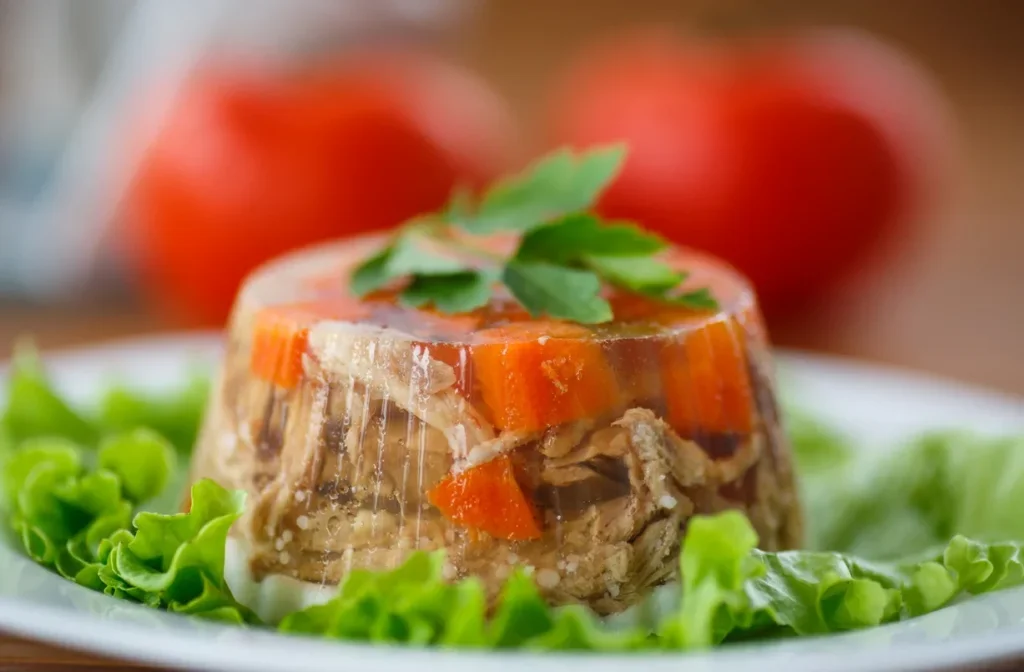
Nothing says “sophisticated ’70s hostess” quite like suspending perfectly good food in jiggly, savory gelatin. Aspic—essentially meat stock solidified with gelatin—was the versatile medium for countless “innovative” dishes that graced dinner party tables. From entire chicken salads encased in wobbling towers to seafood combinations suspended in a quivering, translucent tomb, these creations prioritized presentation over palatability. Atlas Obsscura sinks its teeth into how aspic ended up popular in the United States, and it’s thanks to some very kingly reasons.
The crown jewel of aspic cuisine might be the infamous “Jellied Madrilene”—a tomato aspic often garnished with vegetables, hard-boiled eggs, or seafood. Modern diets focused on whole, minimally processed foods would struggle to categorize these gelatin-heavy creations, which combined natural ingredients with highly processed binding agents. The texture alone—cold, slippery meat jelly—would send today’s texture-conscious foodies running for the hills.
2. Cocktails as Liquid Desserts
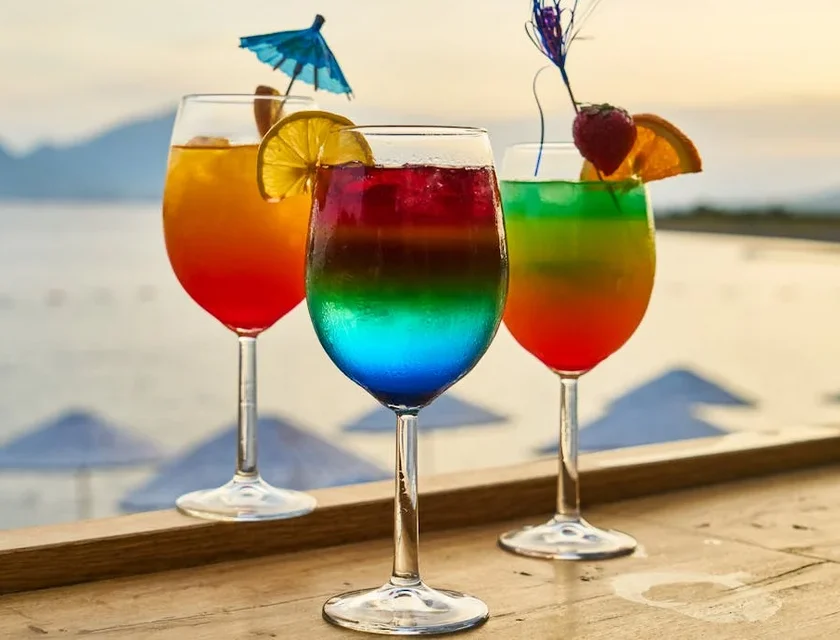
The cocktail culture of the 1970s and 1980s embraced sweetness and creaminess with unprecedented enthusiasm. Drinks like Piña Coladas, White Russians, Mudslides, and Bailey’s-based concoctions functioned essentially as alcoholic desserts, combining heavy cream, sugary liqueurs, and sometimes actual ice cream into glasses that could contain 500+ calories per serving. San Diego Beer News takes a big swig at the rise of these colorful, fantastic beverages in the United States and how they became an artform as much as a tasty treat.
Today’s more calorie-conscious drinkers have shifted toward lower-sugar options like hard seltzers, vodka sodas with natural flavors, or simple wine spritzers. The notion of consuming what amounts to a full dessert in liquid form—often before or alongside an actual meal—represents a time before drinking calories became a major consideration in diet planning. Modern cocktail culture has evolved toward botanical infusions, fresh ingredients, and complex flavors that don’t rely solely on sugar content.
3. Fondue Fever

While fondue has made periodic comebacks, the all-out fondue obsession of the 1970s remains unmatched. No trendy home was complete without a fondue pot, and dinner parties centered around communal dipping of bread cubes into pots of melted cheese or morsels of meat into bubbling oil. The crowning achievement was often dessert fondue—chocolate melted with heavy cream for dipping fruit, marshmallows, and cake pieces. As recounted by Alpenwild, this delicious trend has quite the grand history before it ended up on ’70s American tables.
The sheer caloric density of these meals would terrify today’s macronutrient-conscious eaters. A typical fondue evening included massive amounts of refined carbohydrates, full-fat cheese loaded with sodium, and desserts dripping with saturated fat—all consumed in quantities that would blow a modern dieter’s daily calorie budget in a single sitting. The communal eating aspect (double-dipping concerns aside) might appeal to today’s social diners, but the nutritional profile would send many running for their meal-tracking apps.
4. Hamburger Helper and Boxed Convenience Meals
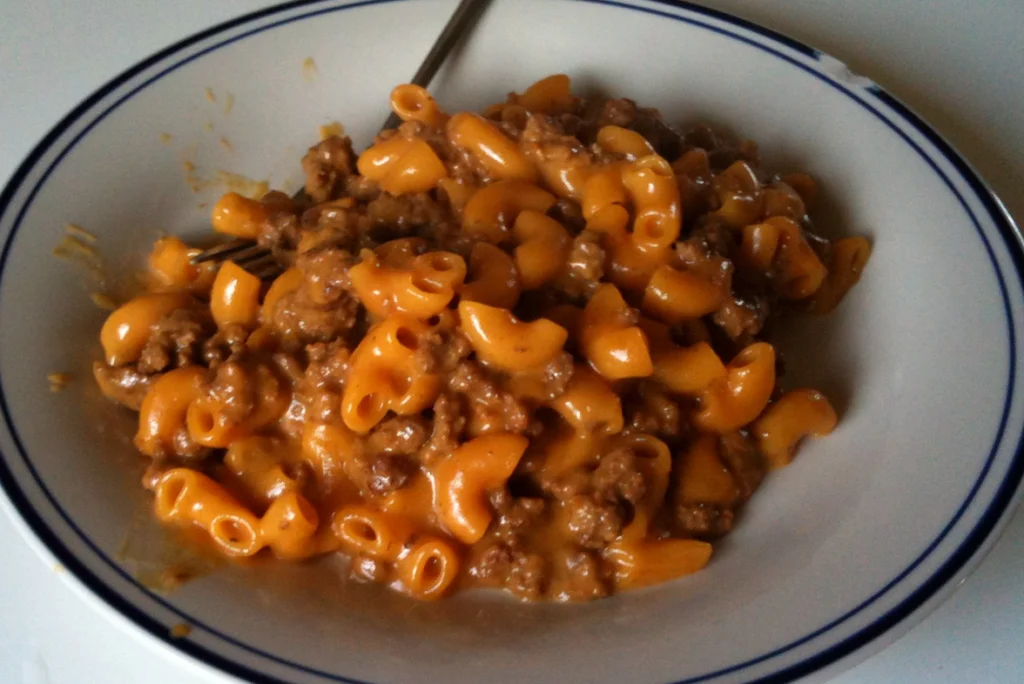
When General Mills introduced Hamburger Helper in 1971, it revolutionized weeknight cooking for busy families. Just brown some ground beef, add the powdered sauce mix and pasta from the box, and voilà—dinner in under 30 minutes. Similar convenience products flooded supermarket shelves throughout the decade, promising homemakers quick meals that would still satisfy hungry families.
The ingredient lists of these convenience foods would horrify today’s clean eaters—artificial flavors, chemical preservatives, MSG, excessive sodium, and refined carbohydrates dominated these boxed meals. The nutritional profile typically featured high calories, minimal fiber, and few (if any) vegetables unless added separately. While today’s busy families still value convenience, they’re more likely to reach for meal kits with fresh ingredients or pre-prepped vegetable options rather than powdered sauce packets with multisyllabic ingredient lists.
5. Sweet ‘n Low and Tab Diet Culture
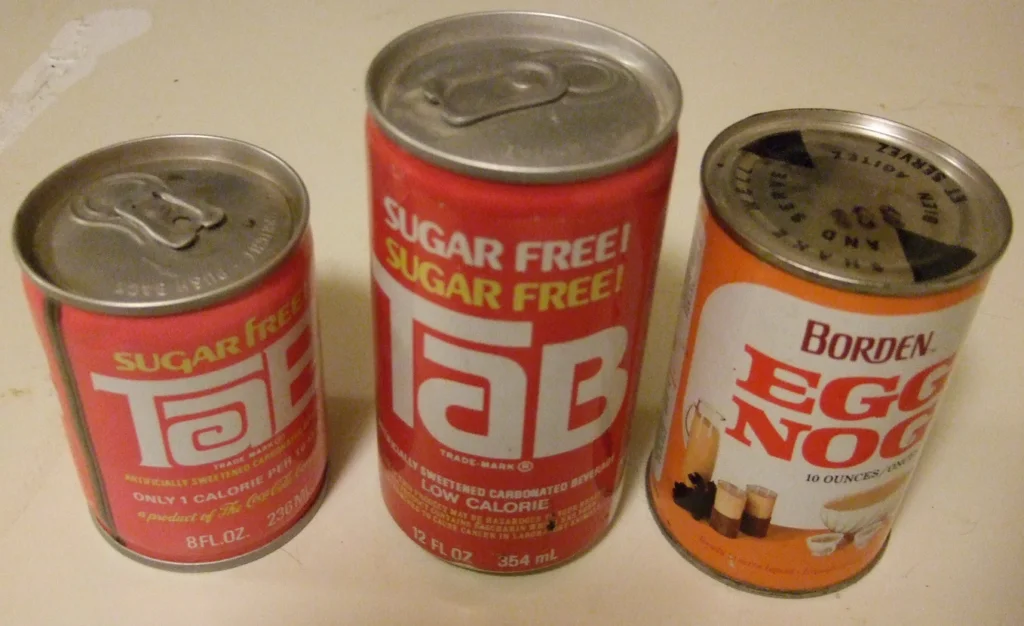
The ’70s and ’80s saw the rise of artificial sweeteners and diet sodas marketed aggressively to weight-conscious consumers. Tab—the first diet cola produced by Coca-Cola—became a status symbol for image-conscious women, while Sweet’n Low packets became fixtures on restaurant tables and in purses nationwide. The pink packets represented the promise of sweetness without consequences.
Today’s health-conscious consumers would be shocked by the blind faith placed in these artificial alternatives. Modern dieters typically avoid artificial sweeteners, concerned about potential health effects and studies suggesting they might actually increase cravings and disrupt gut bacteria. The chemical-heavy approach to calorie reduction stands in stark contrast to today’s emphasis on whole foods and natural ingredients. The blind spot regarding chemicals in food products reflects a time before clean eating became a mainstream concept.
6. Quiche Mania
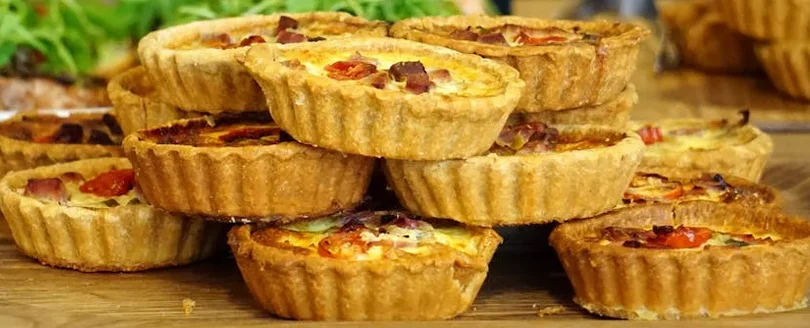
“Real men don’t eat quiche” became a cultural catchphrase in the early 1980s precisely because quiche had become so ubiquitous at brunches and dinner parties across America. These savory custard pies—typically filled with cheese, bacon, onions, and heavy cream in a buttery crust—were considered sophisticated fare and appeared on countless restaurant menus and dinner party tables.
Though made with recognizable ingredients, quiche represented a caloric perfect storm that would alarm today’s dieters. The traditional recipe combines multiple high-fat dairy products with a refined flour crust, creating a single dish that might contain an entire day’s worth of saturated fat and sodium. While modern foodies might enjoy a crustless version with vegetables and egg whites, the original butter-laden, cream-filled versions represented an unabashed celebration of richness that today’s health-conscious eaters would approach with caution.
7. Sweet and Sour Everything
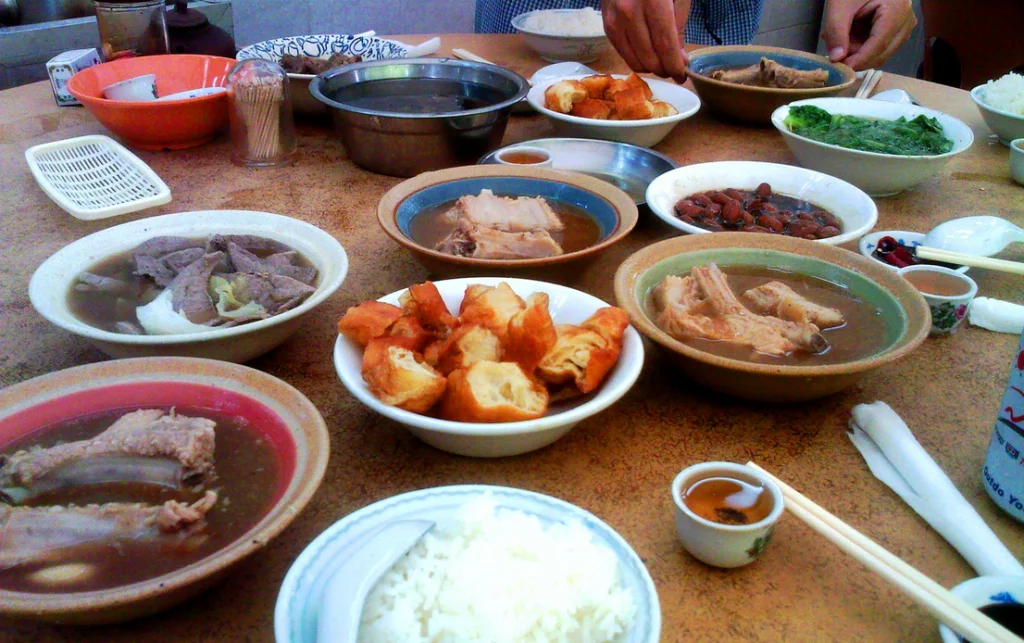
Chinese-American cuisine exploded in popularity during the 1970s and 1980s, but often in highly Americanized forms that barely resembled their origins. None became more emblematic than sweet and sour dishes—particularly sweet and sour chicken or pork, featuring deep-fried meat nuggets coated in gloopy, bright red sauce that was primarily sugar and food coloring.
Today’s nutritionally-aware diners would immediately identify the red flags: deep-fried proteins, sauce containing up to 4 tablespoons of sugar per serving, and minimal actual vegetables beyond the token pineapple chunks and green peppers. The vivid red color—achieved through liberal use of food dyes—would particularly alarm clean eating advocates who avoid artificial colorings. Modern interpretations of Asian cuisine tend to emphasize authentic preparations, complex spices, and vegetable-forward approaches rather than sugar-laden sauces and deep-fried applications.
8. Pasta Primavera with Heavy Cream
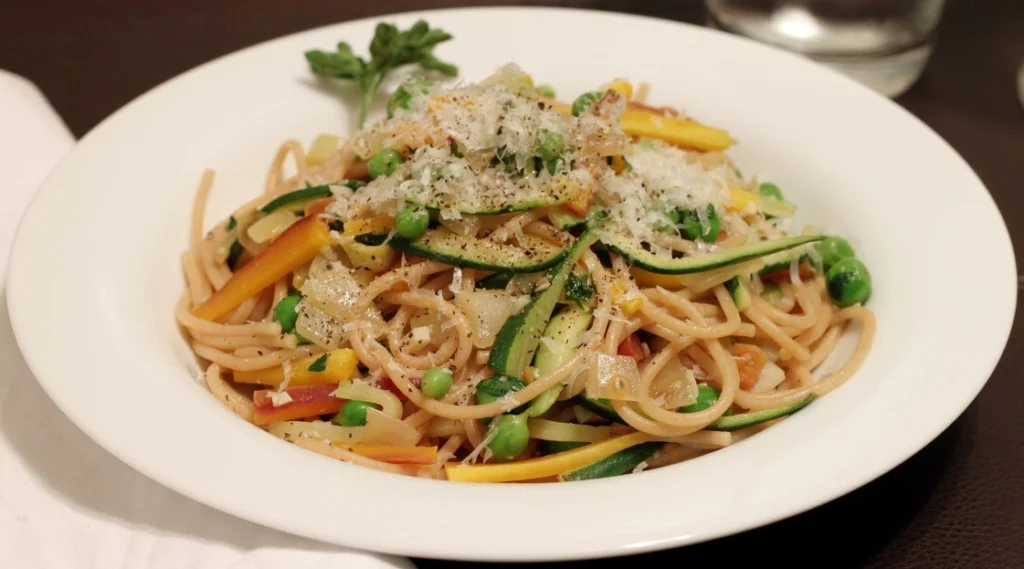
When famed New York chef Sirio Maccioni created Pasta Primavera in the 1970s, he inadvertently launched a nationwide trend that would dominate Italian-American restaurants for decades. His creation—pasta tossed with spring vegetables and a sauce of butter, cream, and cheese—was intended as a celebration of seasonal produce but quickly became one of America’s favorite “healthy” pasta options.
The cognitive dissonance would astound today’s carb-conscious eaters: a dish containing up to a cup of heavy cream per serving was widely considered a virtuous choice because it contained vegetables. Modern diets that prioritize plant-based eating would approve of the vegetable content but question the cream-based sauce that often contained more calories than a serving of meat lasagna. The assumption that vegetables negated unlimited heavy cream and refined pasta represents a fundamental misunderstanding of nutrition that persisted throughout these decades.
9. Cheese Balls and Logs
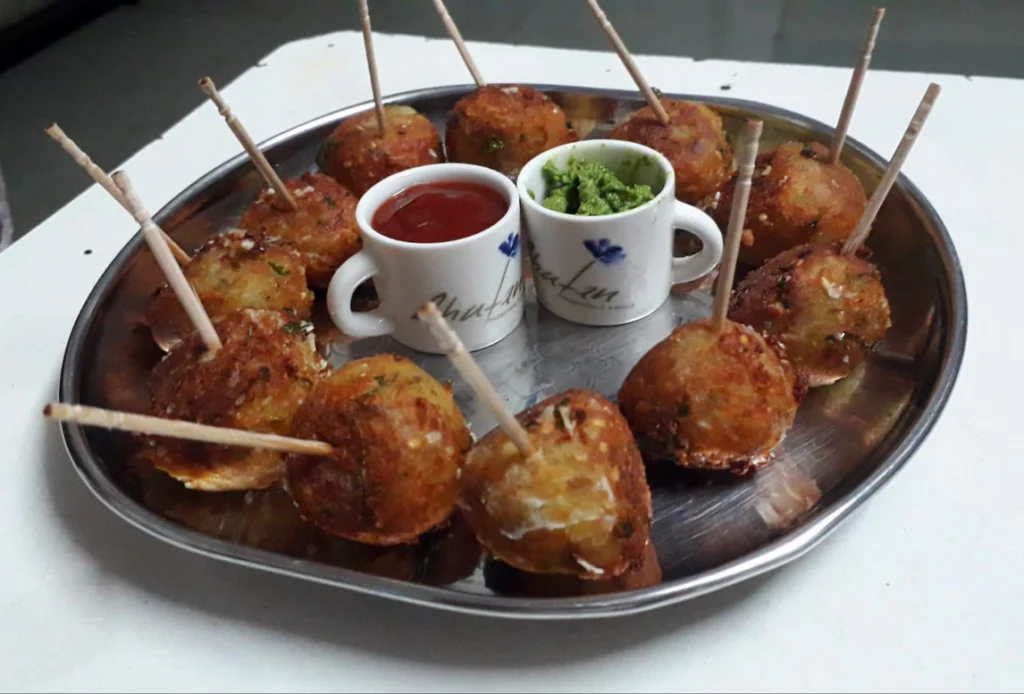
No 1970s cocktail party was complete without a cheese ball or log rolled in nuts and surrounded by crackers. These dense appetizers—typically made from cream cheese, cheddar, Worcestershire sauce, and seasonings—became the centerpiece of countless entertaining spreads, offering guests a communal snacking experience along with their Harvey Wallbangers and Tequila Sunrises.
The modern equivalent might be a carefully curated cheese board with artisanal varieties, but today’s version would likely feature smaller portions and accompaniments like fresh fruit or olives rather than just refined crackers. The sheer density of the classic cheese ball—combining multiple high-fat dairy products into a concentrated sphere of calories—would alarm contemporary nutritionists. A single serving with crackers could easily deliver half a day’s saturated fat allocation before dinner even began.
10. Jell-O Salads as Vegetables
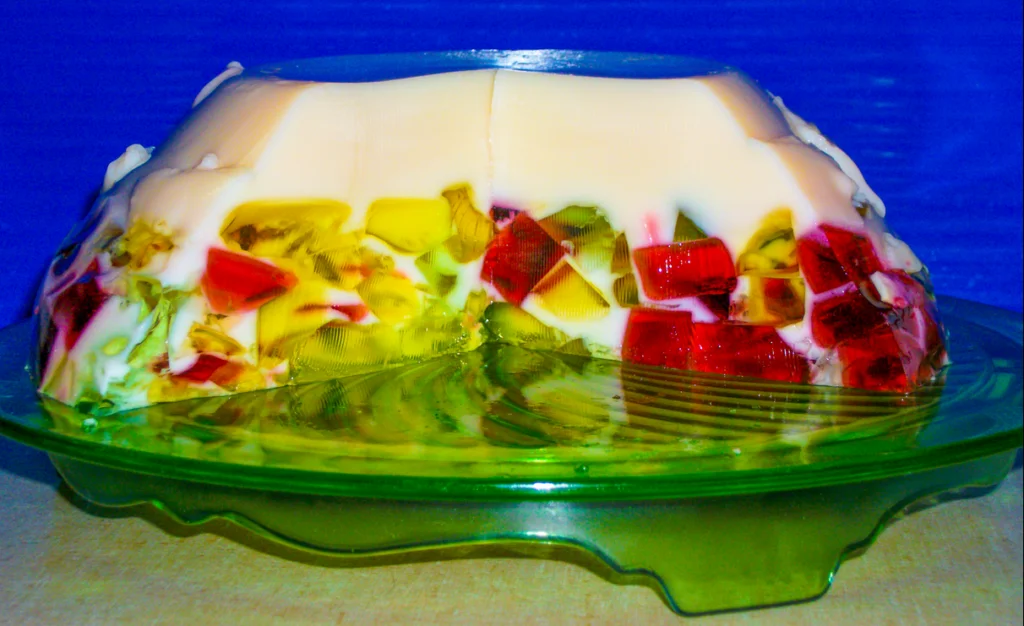
Perhaps nothing epitomizes 1970s food culture more perfectly than the classification of Jell-O-based dishes as “salads” that counted as vegetable servings. These colorful creations—often combining flavored gelatin with ingredients like grated carrots, canned fruit, marshmallows, or even cottage cheese—regularly appeared alongside main dishes as the vegetable component of balanced meals.
The nutritional confusion would baffle today’s vegetable-forward eaters. A typical lime Jell-O “salad” might contain more sugar than a candy bar while offering almost no fiber, vitamins, or minerals found in actual vegetables. The willingness to count sweetened gelatin with canned fruit as a vegetable serving reflects a time when color and texture on the plate often took precedence over nutritional content, a concept that would mystify today’s dieters accustomed to counting vegetable servings in cups of leafy greens.
11. TV Dinners as Modern Convenience
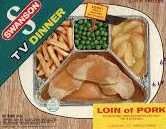
Swanson introduced the TV dinner in the 1950s, but these compartmentalized frozen meals reached their cultural zenith in the 1970s and 1980s when they became mainstays in American freezers. The aluminum trays (later microwavable plastic) with separate sections for meat, potatoes, and a token vegetable represented modern convenience and portion control to busy households.
Today’s health-conscious consumers would immediately notice the nutritional red flags: sodium levels that often exceeded 1,000mg per meal, preservatives, artificial flavors, and vegetables so overcooked they retained minimal nutritional value. The Salisbury steak variety—featuring a highly processed meat patty swimming in gelatinous gravy—would particularly concern modern clean eaters who prioritize recognizable ingredients. While modern frozen meals have evolved to include organic options and global cuisines, the original TV dinners embraced processing techniques and chemical preservation methods that today’s label-readers actively avoid.
12. Ranch Dressing on Everything
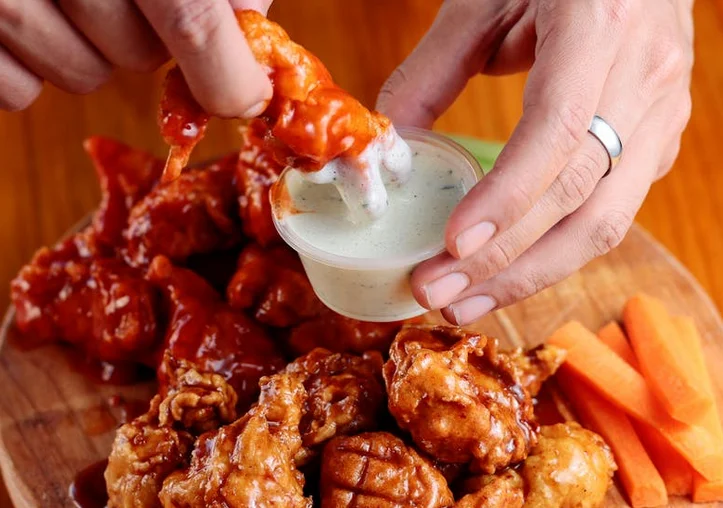
When Hidden Valley Ranch dressing became commercially available in the 1970s, Americans fell hard for its creamy, herbaceous appeal. What began as a salad dressing quickly became an all-purpose condiment applied liberally to vegetables, potatoes, pasta, and eventually pizza. Many parents discovered ranch dressing could convince children to eat vegetables they’d otherwise reject.
While still popular today, the sheer quantity of ranch consumed in its heyday would alarm modern diet adherents. A standard serving (2 tablespoons) contains around 140 calories and 14 grams of fat—and most ’70s and ’80s salads featured far more than the recommended serving. The practice of coating otherwise healthy vegetables in calorie-dense dressing reflects an era when getting children to eat vegetables by any means necessary was considered more important than teaching appreciation for their natural flavors or monitoring fat intake.
13. Ambrosia “Salad”

This classic Southern dish reached national popularity in the 1970s when ingredients like Cool Whip (introduced in 1966) and mini marshmallows became pantry staples. The typical recipe combined mandarin oranges, pineapple chunks, coconut, marshmallows, and maraschino cherries suspended in whipped cream or Cool Whip—and like Jell-O concoctions, it counted as a “salad” course rather than dessert.
The nutritional profile of ambrosia would send today’s clean eaters into shock: a single serving contained multiple forms of sugar (including highly processed marshmallows), artificial colors from the maraschino cherries, chemical stabilizers in the Cool Whip, and minimal nutritional value beyond some vitamin C from the canned fruit. The cognitive dissonance of categorizing what was essentially a dessert as a side dish illustrates how differently food was categorized before nutritional awareness became mainstream.
14. Bacon-Wrapped Everything
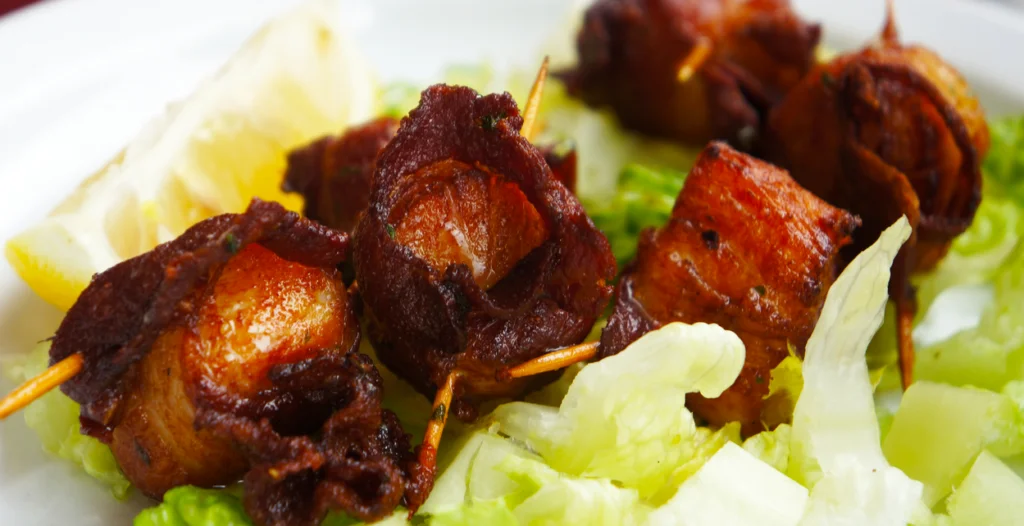
While bacon never truly goes out of style, the 1970s and early 1980s saw peak bacon wrapping as a cooking technique. Scallops, water chestnuts, cocktail weenies, chicken livers, and even dried fruit regularly got the bacon-wrapped treatment for appetizers and main dishes alike. The smoky, fatty bacon was considered the perfect enhancement for almost any food that needed a flavor boost.
Today’s dieters would immediately identify the issues: highly processed meat, significant saturated fat, sodium levels through the roof, and the formation of potentially carcinogenic compounds during cooking. Many modern diets specifically limit or eliminate processed meats like bacon based on World Health Organization findings linking them to increased cancer risk. The casual approach to wrapping everything in bacon represents a time before such health concerns entered the mainstream conversation around meat consumption.
15. Black Forest Cake and Other Decadent Desserts
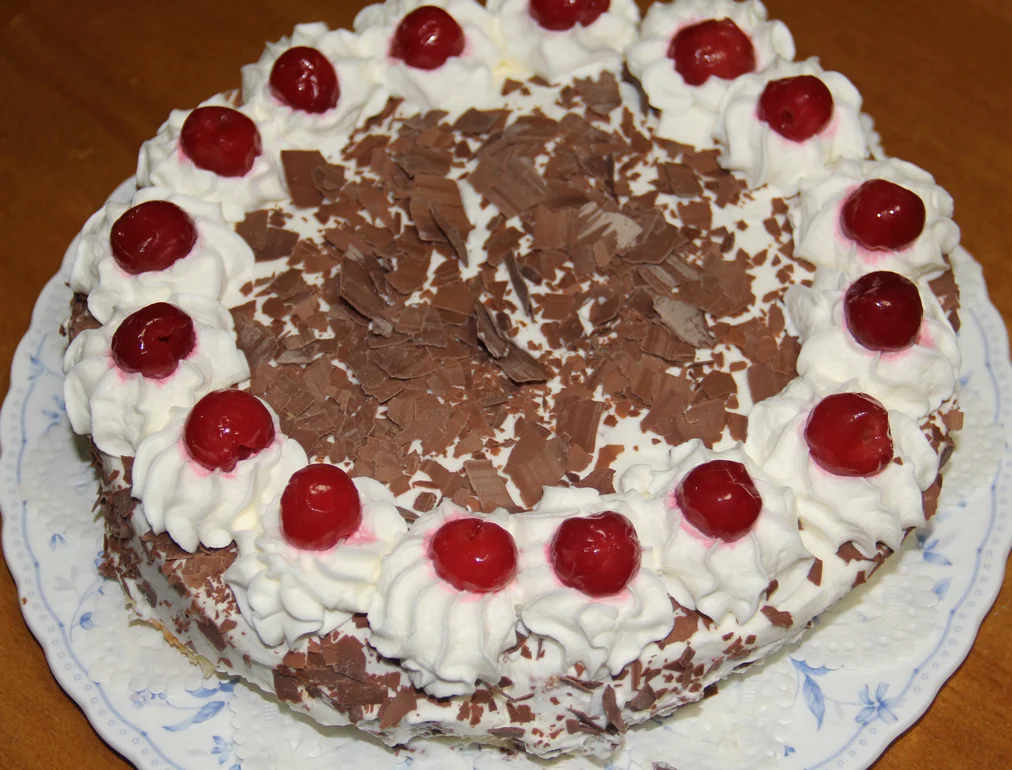
No 1970s dinner party or restaurant meal was complete without an elaborate, towering dessert option. Black Forest Cake—layers of chocolate cake filled with whipped cream and cherries, then doused in kirsch liqueur—exemplified the era’s approach to dessert as spectacle. Other favorites included Bananas Foster (prepared tableside with flaming rum), Baked Alaska, and various cheesecake varieties piled high with toppings.
The unapologetic decadence of these desserts would startle today’s more moderation-minded eaters. A single slice of authentic Black Forest Cake could contain over 600 calories and 40 grams of sugar—metrics that would horrify today’s dessert consumers who have grown accustomed to “healthier” options like fruit-based sorbets or dark chocolate squares. The portion sizes alone would shock modern diners; where today’s restaurants might serve delicate, artistic dessert presentations, ’70s establishments prided themselves on generous slabs of cake that could easily serve two or three by current standards.
Food trends, like fashion, reflect the values and knowledge of their era. The popular dishes of the 1970s and 1980s emerged during a unique moment when convenience foods were revolutionizing American kitchens, nutritional science was still evolving, and visual impact often trumped health considerations. While we might chuckle at photographs of towering Jell-O creations or cheese balls rolled in crushed nuts, these foods represent more than just outdated tastes—they document our evolving relationship with nutrition, convenience, and cultural definitions of what constitutes a “proper” meal. Perhaps in forty years, diners will look back at our own kale smoothies and cauliflower crusts with similar amusement, wondering how we could have possibly thought them delicious or nutritionally sound.


